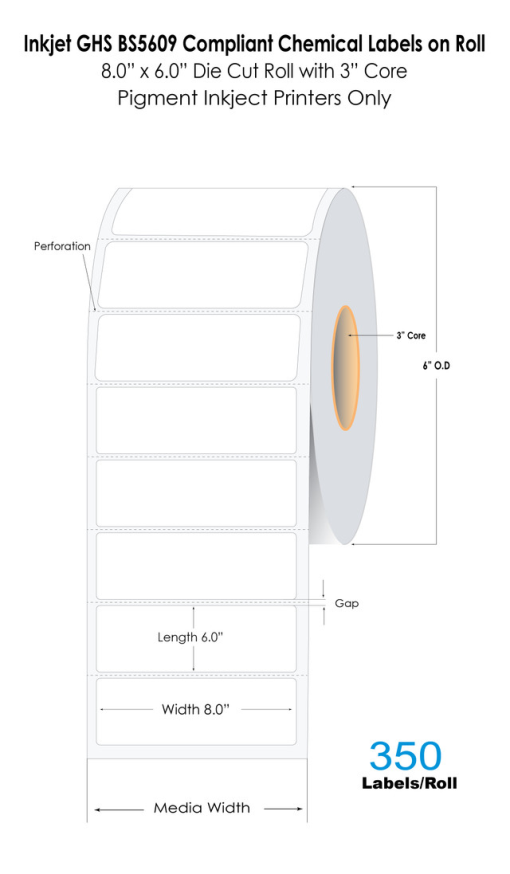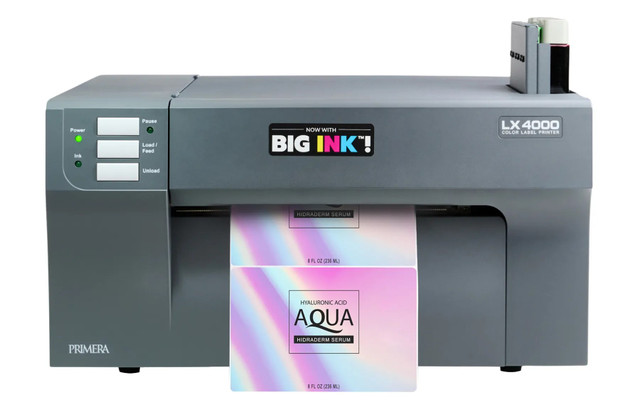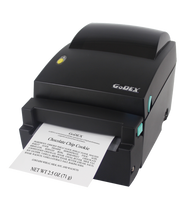Why Does Label Printer Smudge or Fade, and How To Fix It?
30th May 2025
What happens when the very labels meant to impress your customers start to smudge, fade, or peel off within days? You're not alone if you've faced this frustrating issue. Problems like ink smearing, dull colors, or fading after application aren't just aesthetic; they directly impact your product's shelf appeal, compliance with regulatory standards, and customer trust.
This is where having a reliable color or thermal label printer, like the ones available from DuraFast Label Company, becomes essential. We specialize in high-performance, long-lasting labeling solutions that stand up to moisture, heat, abrasion, and time. Whether you're printing product labels, shipping labels, or compliance tags, our equipment is built to ensure sharp, smudge-resistant output.
In this article, we'll go over the most common causes of label smudging, fading, and poor adhesion—and what you can do about it. We'll break down troubleshooting tips by issue, suggest actionable solutions, and provide guidance on choosing the right label printer and supplies to eliminate these problems for good.
Common Label Printing Problems: Smudging, Fading, and Adhesion Issues
Let's get straight to the issues that plague many businesses trying to produce professional-grade labels in-house.
1. Smudging Right After Printing
Possible Causes:
- Using inkjet printers with labels that aren't compatible with dye or pigment-based inks
- Insufficient drying time before handling
- High humidity environments
- Low-quality or incorrect label material
Fixes:
- Match the ink with the label material: Pigment inks need matte or inkjet-receptive materials; dye-based inks need glossy or specially coated labels.
- Allow for drying time: Especially with dye-based inks, printed labels should rest for a few seconds or more to allow the ink to fully absorb.
- Use a printer with a built-in dryer or fast-dry ink formula: Some high-quality color label printers reduce drying time significantly.
- Control your environment: Use a dehumidifier in your print area to prevent moisture-related smudging.
2. Fading Over Time
Possible Causes:
- UV light exposure
- Use of dye-based inks (which aren't as fade-resistant as pigment-based)
- Poor label material that absorbs moisture or deteriorates
- Incorrect printer settings leading to poor ink saturation
Fixes:
- Switch to pigment-based ink printers: These inks are more resistant to UV and environmental degradation.
- Select weatherproof or outdoor-rated label materials: These materials offer better long-term durability.
- Store labels properly: Avoid prolonged exposure to direct sunlight or harsh storage environments.
- Adjust printer settings for optimal saturation: Under-inking can lead to washed-out prints.
3. Labels Not Sticking Properly
Possible Causes:
- Poor adhesive quality
- Mismatch between label adhesive and surface type (e.g., curved, cold, oily)
- Improper application technique (e.g., applying to dusty or wet surfaces)
Fixes:
- Use the right adhesive: Permanent, removable, freezer-grade, and high-tack adhesives all serve different purposes.
- Clean and dry surfaces before applying: Adhesives bond best to clean, smooth, and dry surfaces.
- Apply pressure evenly: Ensure even contact between the label and the product surface.
- Choose label stock designed for the container material: Plastic, glass, cardboard, and metal all require specific adhesives.
Material Matters: Choosing the Right Label Stock

Your label printer is only as good as the labels you feed into it. Here are key considerations when selecting label materials.
Paper vs. Synthetic Labels
- Paper Labels: Best for short-term indoor use. Economical but vulnerable to moisture and tearing.
- Synthetic Labels (Polyester, Polypropylene, Vinyl): Ideal for harsh environments. Resistant to water, chemicals, abrasion, and UV light.
Coating Types
- Glossy: Offers vibrant color reproduction, but prone to smudging if not compatible with your ink.
- Matte: Reduces glare and provides a soft, sophisticated finish. Great for pigment inks.
- High-Gloss Photo Finish: Requires specific inks and often best used in professional pigment-based color label printers.
Adhesive Options
- Permanent: Strong bond, suitable for most surfaces.
- Removable: Allows repositioning; ideal for temporary labels.
- Freezer/Cold Temp: Maintains adhesion in low temperatures.
- High-Tack: Designed for hard-to-stick surfaces.
Printer Type and Ink Compatibility
Not all color label printers are the same. Ink and printer type will largely determine print quality and durability.
Inkjet Color Label Printers
- Dye-Based Inks: Bright colors, but not water- or UV-resistant. Better for indoor, short-term use.
- Pigment-Based Inks: More durable, ideal for compliance labels, outdoor use, and long-term storage.
Thermal Label Printers
- Direct Thermal Printers: No ink required; heat-sensitive paper darkens where heat is applied. Fades quickly with heat or sunlight.
- Thermal Transfer Printers: Uses a ribbon to transfer ink. Produces durable, fade-resistant prints.
When to Use Thermal vs. Inkjet
- Use thermal label printers for barcodes, shipping, and inventory labels where longevity and resistance are crucial.
- Use color inkjet printers for product labels, branding, and full-color needs.
Environmental Factors That Impact Print Quality
Environmental conditions can dramatically affect the performance of both the printer and the label.
- Temperature and Humidity
- Ink drying time and adhesion rates are sensitive to moisture.
- Extreme cold can reduce adhesive effectiveness.
- Thermal printers may underperform in high-humidity settings.
- Dust and Contaminants
- Dust inside the printer can cause streaks and smudging.
- Dirty application surfaces reduce adhesive bond.
- UV Exposure
- Causes ink to break down and fade.
- Can weaken adhesive strength on some label types.
Fixes:
- Control climate: Maintain stable temperature and humidity where labels are printed and applied.
- Clean your equipment regularly: Schedule maintenance to prevent buildup inside the printer.
- Use UV-resistant inks and materials for labels that will be exposed to light.
Maintenance Tips to Prevent Smudging and Fading

Keeping your printer and supplies in peak condition is one of the easiest ways to reduce label issues.
- Regular Cleaning
- Clean the printhead, platen roller, and sensors using manufacturer-approved materials.
- Check and remove dust or debris from the label path.
Firmware and Driver Updates
- Updated drivers can optimize print settings and fix known bugs.
- Use printer software to calibrate and adjust settings for new materials.
Ribbon and Cartridge Storage
- Store cartridges and ribbons in cool, dry places.
- Avoid touching the print surface of thermal ribbons.
Scheduled Inspections
- Look for wear and tear on key components like printheads.
- Replace worn parts to prevent poor print quality.
Printing Technique and Settings
Even the best printer can produce sub-par results with the wrong settings.
DPI (Dots Per Inch)
- Higher DPI gives better image clarity but uses more ink.
- For barcodes, 300 DPI is usually sufficient; for branding and product labels, 600 DPI or more may be needed.
Print Speed
- Faster isn't always better. High speeds can cause misalignment, banding, or incomplete drying.
Color Calibration
- Adjust ink saturation and contrast based on your label material.
- Run test prints before full production to ensure color accuracy.
Label Alignment
- Misaligned labels can smear ink or print off-center.
- Use built-in alignment tools or manual guides if available.
When to Replace Printer Components
Over time, wear and tear can degrade print quality.
Signs It’s Time for a Replacement
- Frequent smudging or fading despite new cartridges and correct settings
- Misprints, banding, or alignment errors that persist
- Labels peeling off despite correct adhesives
Parts to Watch:
- Printheads: Especially in thermal printers, printheads wear down over time.
- Platen Rollers: If uneven, they can cause label feed issues.
- Cartridges and Ribbons: Depleted or damaged supplies cause inconsistent output.
Selecting the Right Printer and Supplies
If you're still encountering issues despite proper care and setup, it might be time to invest in higher-quality equipment.
Features to Look for:
- Pigment-ink compatibility for long-term, durable prints
- Media versatility (supports paper, synthetic, glossy, matte)
- Customizable DPI and print speed
- Efficient drying mechanisms to reduce smudging
Where to Purchase Reliable Equipment

We recommend sourcing from companies that offer a wide selection of commercial-grade solutions, reliable customer support, and manufacturer-certified supplies. Buying from trusted suppliers also ensures you get the right accessories, warranties, and setup assistance.
Still Fighting Smudges and Fading? Here’s What We Recommend
If you're constantly dealing with smudged, faded, or peeling labels, it's time to rethink your label printing strategy. Subpar equipment, incorrect supplies, or poor printing environments are often to blame. But you don't have to settle for second-rate results.
At DuraFast Label Company, we specialize in helping businesses solve exactly these problems. Whether you need high-quality color label printers for vivid product packaging or high-quality thermal label printers for rugged logistics environments, we offer one of the best selections available. You can purchase thermal label printers online or buy premium color label printers through our website with full support and guidance.
We carry printers that use pigment-based inks for fade resistance, thermal transfer models for barcode durability, and media options designed for even the most demanding conditions. Our equipment is engineered to reduce smudging, prevent fading, and ensure adhesion that lasts—so your labels stay sharp, vibrant, and reliable.
Ready to get started? Order your high-performance label printer and supplies from DuraFast Label Company today to get reliable results, longer label life, and professional-grade output.
